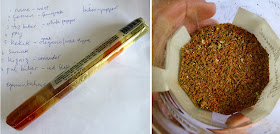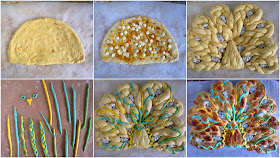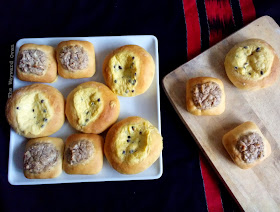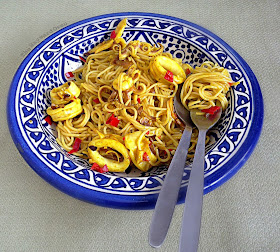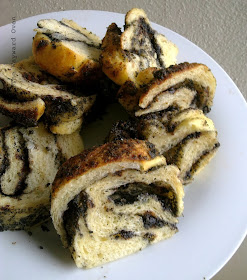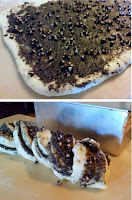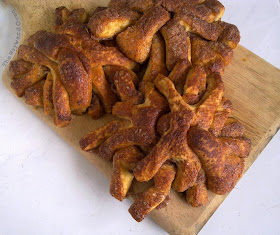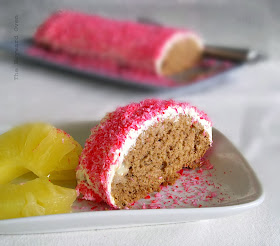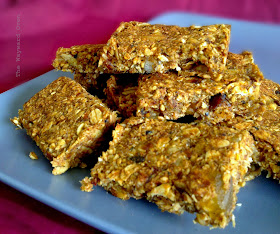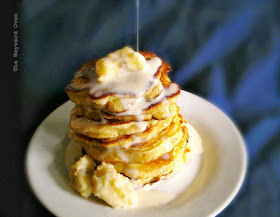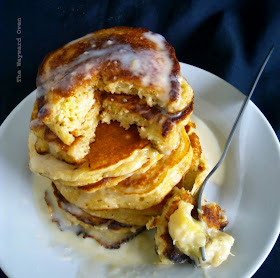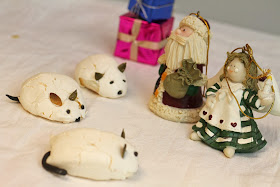 |
| PEPPERMINT MERINGUE MICE ~ THE ONES THAT SURVIVED |
Unless my oven goes completely
kaput, I see my baking in the last few days of 2013 to be mishap-free – although for my own self, I foresee hands and arms with inevitable burns due to my inherent ability to get into accidents.
My last few baked dishes, however, have been quite terrible. The peppermint meringue mice in the picture above received some compliments, but these were the ones that survived the journey from my home to the office where we were having a Christmas pot luck. Most had cracked or lost their ears and tails. But that probably saved everyone from eating them because they were so tooth-achingly sweet!
I only made them to use up the leftover egg whites after using the yolks for a turkey-shaped challah I was determined to make.
 |
| Shaping the turkey-shaped challah |
The
loaf started out fine. I
followed the instructions for what this site called the "Turkallah" although I changed a little of the head and neck.
The problem started when the loaf was ready for the oven. I normally bake free-standing loaves directly on a heavy upturned baking tray that I place in the oven when I am preheating it. This is how I was going to bake the turkey loaf as well.
But then, I clumsily slid the loaf into the oven and part of it hit the side and was distorted. I tried my best to reshape it on the hot baking tray, but unfortunately, the turkey lost its beak. |
| The turkey loses its beak. |
I took the loaf to the office pot luck and no one could figure out what it was. One colleague said it looked like a dragon and another thought it was a Christmas stocking. Thank goodness, it was cooked well and tasted good.
But the worst was yet to come.
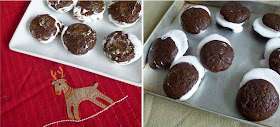 |
| The whoopie pies disassembled themselves after sitting for a while (right). |
The
gingerbread whoopie pies with marshmallow fluff filling I made for
the Daring
Bakers challenge were a disaster. The marshmallow fluff was stiff enough after I had made it, but it turned liquid a few minutes after the cookies were sandwiched together. Refrigeration didn't help. So just for the picture, I squeezed them into shape. Shortly after the picture was taken, they slid apart again.
Here's wishing everyone a Happy New Year, and may all your baking be excellent!


